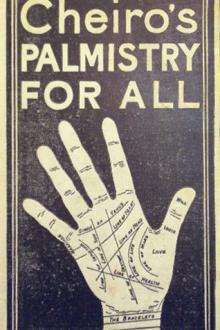The Diary - Samuel Pepys (red white and royal blue hardcover txt) 📗

- Author: Samuel Pepys
Book online «The Diary - Samuel Pepys (red white and royal blue hardcover txt) 📗». Author Samuel Pepys
See May 9th, 1667. ↩
Sir John Kelyng, King’s Serjeant, 1661; appointed a judge of the King’s Bench in 1663, and Chief Justice of the King’s Bench in 1665, and died at his house in Hatton Garden, May 9th, 1671. He was a very unpopular judge. ↩
Sir Joseph Sheldon, Alderman of Farringdon Without, Sheriff in 1666–67, and Lord Mayor, 1675–76. ↩
According to Smith’s Obituary, Gabriel Holmes was hanged on the 11th July, 1667, and buried in the new churchyard of St. Giles’s, Cripplegate. ↩
See May 9th, 1667. ↩
George Carteret, in 1681 created Baron Carteret of Hawnes, co. Bedford, in consideration of the eminent services rendered by his father and grandfather to Charles II. He married Lady Grace Granville, created Viscountess Carteret and Countess Granville in 1715. Their son John succeeded as second Baron Carteret in 1695, and as Earl Granville in 1744. ↩
See May 9th, 1667. ↩
Mary, Duchess of Richmond. See note 1380. ↩
Lord Buckhurst and Nell Gwyn, with the help of Sir Charles Sedley, kept “merry house” at Epsom next door to the King’s Head Inn (see Cunningham’s Story of Nell Gwyn, ed. 1892, p. 57) ↩
Alexander VII. He died May 22nd, 1667, N.S. (see note 3186). ↩
Of Clement IX, Giulio Rispogliosi, elected June 20th, 1667, N.S. He was succeeded by Clement X in 1670. ↩
See June 28th. ↩
See note 3515. ↩
He died at the beginning of December of this year. ↩
This was probably Richard Evelyn, of Woodcote Park, near Epsom, and his wife Elizabeth, daughter and heir of George Mynne, Esq., of Horton, in Epsom, both of which places belonged to her. —B. ↩
Elizabeth, daughter and co-heir of John Massingberd. George, Lord Berkeley, was created Earl of Berkeley in 1679. ↩
Charles, eldest son, K.B. 1661, summoned to parliament as Baron Berkeley of Berkeley, vitâ patris, 1689. Died 1710; having succeeded his father in the earldom, 1698. —B. ↩
Thomas Pointer to Samuel Pepys (Hull, July 15th): “Capt. Hogg has brought in a great prize laden with Canary wine; also Capt. Reeves of the Panther, and the Fanfan, whose commander is slain, have come in with their prizes” (Calendar of State Papers, 1667, p. 298). ↩
Grape wine was formerly largely made in England, and much of it was said to be of excellent quality. ↩
The wife of Balthazar St. Michel, Mrs. Pepys’s brother. —B. ↩
Leigh, opposite to Sheerness. —B. ↩
Reference has already been made to Andrew Marvell’s Instructions to a Painter, in which the unpaid English sailors are described as swimming to the Dutch ships, where they received the money which was withheld from them on their own ships. ↩
The angel coin was so called from the figure of the Archangel Michael in conflict with the dragon on the obverse. On the reverse was a representation of a ship with a large cross as a mast. The last angel coined was in Charles I’s reign, and the value varied from 6s. 8d. to 10s. ↩
See Lady Theresa Lewis’s Friends and Contemporaries of Lord Chancellor Clarendon; Illustrative of Portraits in His Gallery, 1852. 3 vols. 8vo. —B. ↩
“Bilander. A small merchant vessel with two masts, particularly distinguished from other vessels with two masts by the form of her mainsail, which is bent to the whole length of her yard, hanging fore and aft, and inclined to the horizon at an angle of about 45°. Few vessels are now rigged in this manner, and the name is rather indiscriminately used.”
Smyth’s Sailor’s Word-Book↩
John Prowd. ↩
Dull, heavy, spiritless. ↩
Shellhaven, on the Essex coast, opposite to Cliffe, on the Kentish side. —B. ↩
Tamkin, or tampion, the wooden stopper of a cannon placed in the muzzle to exclude water or dust. ↩
The Speaker was Sir Edward Turner. ↩
The peace was signed on the 31st. See August 9th, post. —B. ↩
Created K.B. at Charles II’s coronation, and M.P. for Weymouth in several parliaments. He was the son of John Coventry, the eldest brother of Sir W. Coventry; and the outrage committed on his person, on the 21st December, 1670, by Sir Thomas Sandys, O’Bryan, and others, who cut his nose to the bone, gave rise to the passing of the Bill still known by the name of “The Coventry Act,” under which persons so offending were to suffer death. —B. ↩
Charles owned only four children by Lady Castlemaine-Anne, Countess of Sussex, and the Dukes of Southampton, Grafton, and Northumberland. The last of these was born in 1665. The paternity of all her other children was certainly doubtful. See pp. 50, 52. ↩
Silas Taylor, writing to Williamson, July 25th, 1667, says:
“Hearing the great guns from the Thames and knowing the Dutch stood that way, Sir Joseph Jordan resolved to make towards them with all the force he could muster, provided himself with 50 land-soldiers and what small vessels, frigates, and fire-ships were there, and set sail towards the Spitts, but could not get much beyond the Naze.”
Calendar of State Papers, 1667, p. 325↩
Thomas Page, James Jenifer, and George Coult





Comments (0)